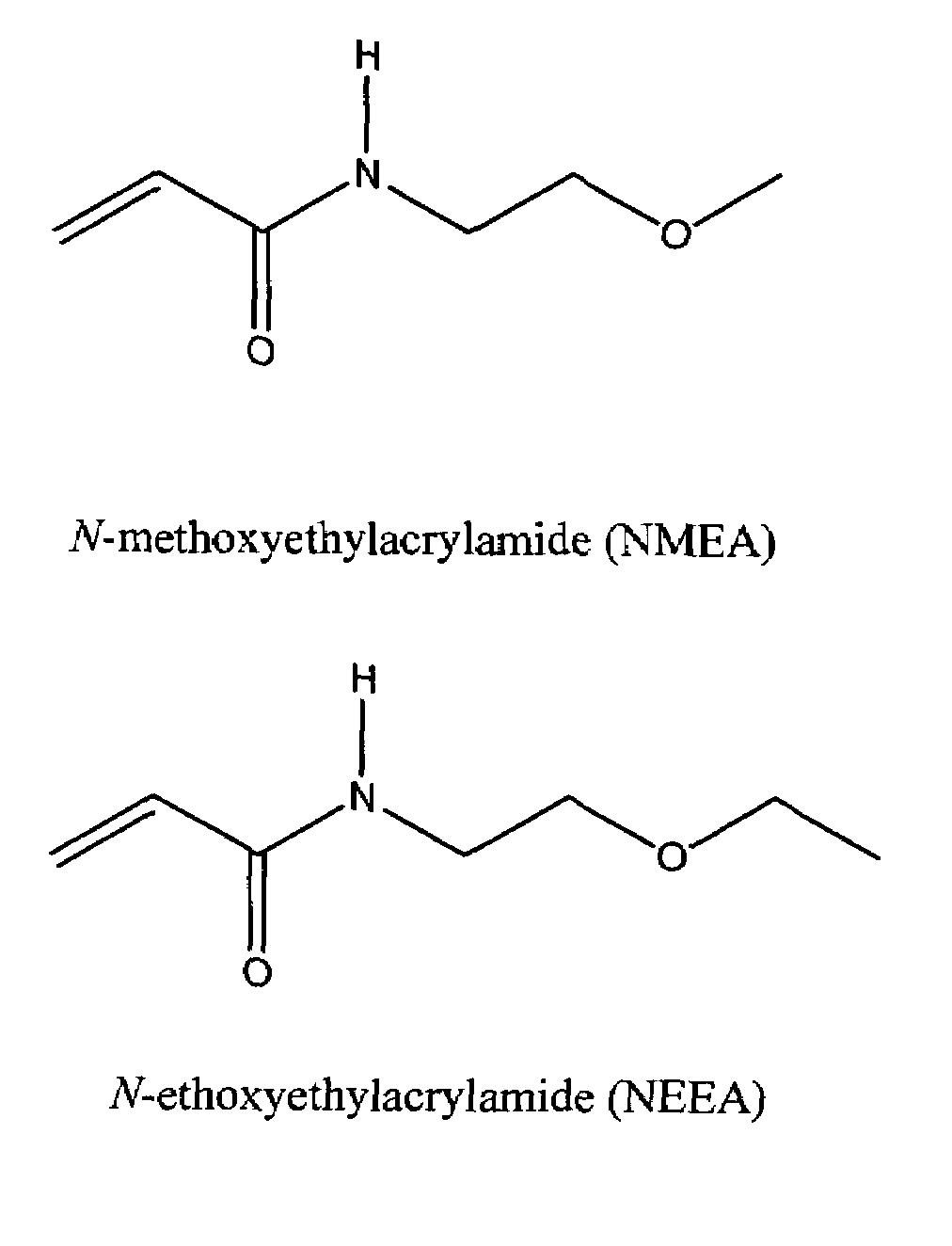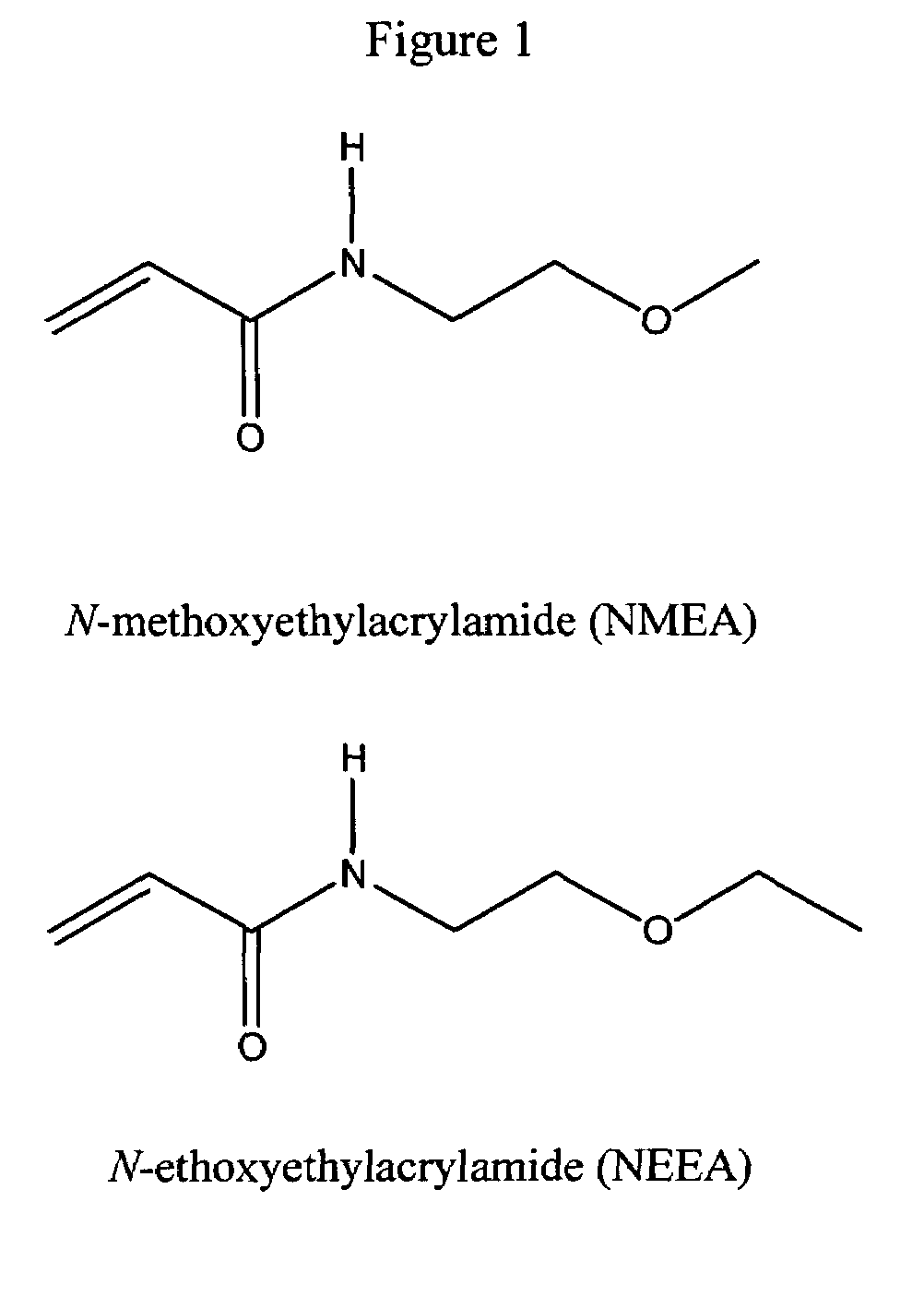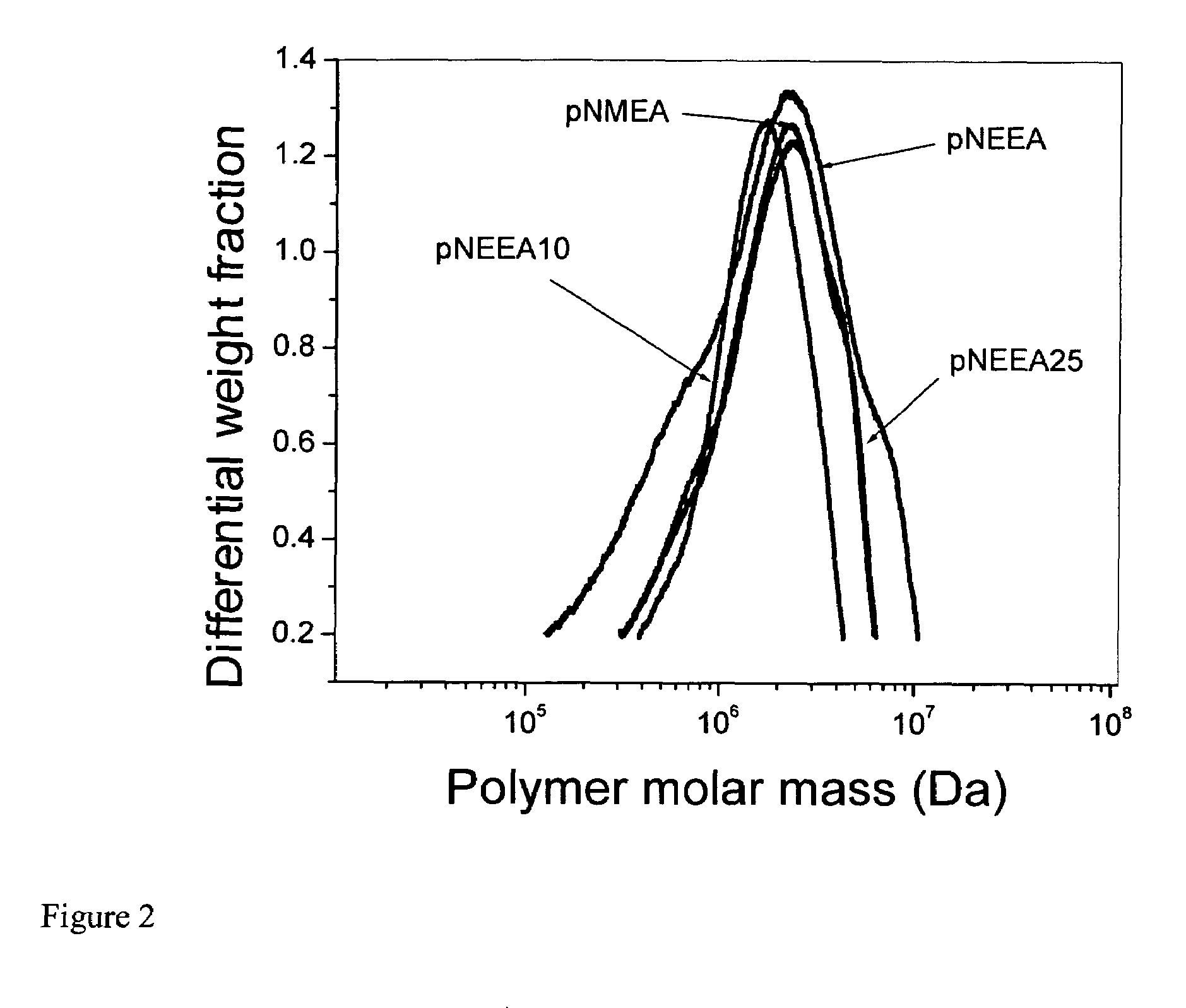Thermo-gelling matrices for microchannel DNA sequencing
a microchannel electrophoresis and gelling technology, applied in the direction of fluid pressure measurement, liquid/fluent solid measurement, peptide, etc., can solve the problems of high viscosity, lack of wall coating ability, and significant replacement of microchannel electrophoresis instruments, so as to improve dna separation, improve dna separation, and low viscosity
- Summary
- Abstract
- Description
- Claims
- Application Information
AI Technical Summary
Benefits of technology
Problems solved by technology
Method used
Image
Examples
example 1a
[0041]The structures of NMEA and NEEA monomers are shown in FIG. 1 and the corresponding polymers can be represented by the aforementioned formula. Ultrapure (>99.5% pure) NMEA and NEEA (Monomer-Polymer and Dajac Labs, Inc., Feasterville, Pa., USA) were polymerized and copolymerized at different monomer ratios, as shown, in an aqueous solution (1% (w / v) total monomer concentration), thermostated at 25° C., and degassed with nitrogen prior to initiation. The reactions were initiated with 0.5 μL per mL of monomer solution of a 10% (w / v) ammonium persulfate (APS) solution in water and 0.1 μL per mL of monomer solution of N,N, N′, N-tetramethylethylenediamine (TEMED) (both, Amresco, Solon, Ohio, USA). After 24 h, the resulting mixtures were removed from the water bath, poured into 100,000 molecular weight cutoff cellulose ester membranes (Fisher Scientific, Pittsburgh, Pa., USA), and dialyzed against deionized, distilled water for 10 days with frequent water changes. The polymer solutio...
example 1b
[0045]The molar mass distributions of the NMEA polymer and NMEA / NEEA copolymers were determined by first fractionating the polymer samples by gel permeation chromatography (GPC) prior to analysis by on-line multi-angle laser light scattering (MALLS) and refractive index detection, using a Waters 2690 Alliance Separations Module (Milford, Mass., USA) with Shodex (New York, N.Y., USA) OHpak columns SB-806 HQ, SB-804 HQ, and SB-802.5 HQ connected in series. In this tandem GPC-MALLS mode, the effluent from the GPC systems flows into the DAWN DSP laser photometer and Optilab interferometric refractometer (both, Wyatt Technology, Santa Barbara, Calif., USA). Sample aliquots of 100 μL (sample concentration, 0.5 mg / mL) were injected into the system (mobile phase 0.1 M NaCl, 50 mM NaH2PO4, and 200 ppm NaN3; flow rate 0.30 mL / min). The tandem GPC-MALLS data were processed with ASTRA® for Windows® software from Wyatt Technology.
example 1c
[0046]The copolymer composition was determined by 1H NMR spectroscopy with a Varian Invoa 500 (Walnut Creek, Calif.). The steady-shear and temperature-dependent viscosities of the polymer solutions were measured with a Paar Physica MCR rheometer (Ashland, Va., USA) equipped with a cone-plate geometry (diameter 25 mm, angle 2°). The polymers were dissolved in sequencing buffer consisting of 50 mM tris(hydroxymethyl)aminomethane (Tris), 50 mM N-tris(hydroxymethyl)methyl-3-aminopropane-sulfonic acid (TAPS), and 2 mM ethylenediaminetetraacetic acid (EDTA) (1×TTE) (Amresco, Solon, Ohio, and Sigma, St. Louis, Mo., USA) containing 7 M urea (Amresco) (0.5×TTE, 7 M urea, pH 8), at concentrations typically used in the DNA sequencing experiments. Steady-shear viscosity at different rates of applied shear (from 0.01 s−1 to 1000 s−1) was measured. Temperature-dependent viscosity was measured at a constant shear rate of 1 s−1 and at a heating rate of ˜2° C. / min.
PUM
| Property | Measurement | Unit |
|---|---|---|
| molecular weight | aaaaa | aaaaa |
| weight percent | aaaaa | aaaaa |
| temperature | aaaaa | aaaaa |
Abstract
Description
Claims
Application Information
 Login to View More
Login to View More - R&D
- Intellectual Property
- Life Sciences
- Materials
- Tech Scout
- Unparalleled Data Quality
- Higher Quality Content
- 60% Fewer Hallucinations
Browse by: Latest US Patents, China's latest patents, Technical Efficacy Thesaurus, Application Domain, Technology Topic, Popular Technical Reports.
© 2025 PatSnap. All rights reserved.Legal|Privacy policy|Modern Slavery Act Transparency Statement|Sitemap|About US| Contact US: help@patsnap.com



